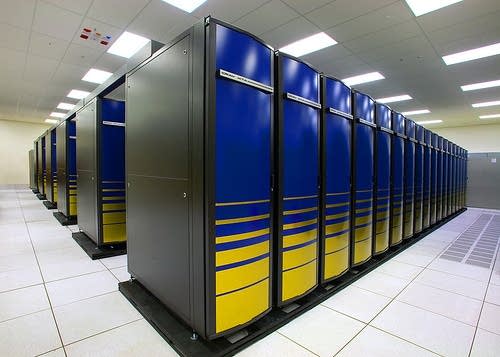Is AI coming to a weather forecast near you?
Latest AI experiment beat European model forecasts

Go Deeper.
Create an account or log in to save stories.
Like this?
Thanks for liking this story! We have added it to a list of your favorite stories.
The average person checks the weather forecast on their phone several times a day. One day soon you may be seeing a weather forecast generated by artificial intelligence — and it could improve the accuracy of modern weather forecasting.
A recent study in the journal Science describes how an AI weather forecast model from Google’s DeepMind significantly outperformed conventional weather forecasting methods. The project called GraphCast bested the European Centre for Medium-Range Weather Forecasts predicting global weather conditions up to 10 days in advance.
GraphCast’s forecast skill and efficiency are already competitive with traditional weather forecasting methods.
Here’s Google’s description of GraphCast and the study performance:
Turn Up Your Support
MPR News helps you turn down the noise and build shared understanding. Turn up your support for this public resource and keep trusted journalism accessible to all.
GraphCast is a weather forecasting system based on machine learning and Graph Neural Networks (GNNs), which are a particularly useful architecture for processing spatially structured data.
GraphCast makes forecasts at the high resolution of 0.25 degrees longitude/latitude (28km x 28km at the equator). That’s more than a million grid points covering the entire Earth’s surface. At each grid point the model predicts five Earth-surface variables – including temperature, wind speed and direction, and mean sea-level pressure – and six atmospheric variables at each of 37 levels of altitude, including specific humidity, wind speed and direction, and temperature.
While GraphCast’s training was computationally intensive, the resulting forecasting model is highly efficient. Making 10-day forecasts with GraphCast takes less than a minute on a single Google TPU v4 machine. For comparison, a 10-day forecast using a conventional approach, such as HRES, can take hours of computation in a supercomputer with hundreds of machines.
In a comprehensive performance evaluation against the gold-standard deterministic system, HRES, GraphCast provided more accurate predictions on more than 90 percent of 1380 test variables and forecast lead times (see our Science paper for details). When we limited the evaluation to the troposphere, the 6-20 kilometer high region of the atmosphere nearest to Earth’s surface where accurate forecasting is most important, our model outperformed HRES on 99.7 percent of the test variables for future weather.
Changing the face of weather forecasting?
I’ve been making daily weather forecasts from computer models for four decades. There are two big developments that jump out here for me with the new AI machine learning approach.
The first is that GraphCast’s machine learning application uses historical data analogs. This is a different approach to the commonly used process of feeding current weather conditions into a forecast model that predicts future weather patterns. The use of historical weather analogs could improve outcomes in many forecast situations.
The second notable development is the sheer speed of the AI forecast process. GraphCast is able to run these forecasts in about one minute. That’s magnitudes of scale faster than current weather forecast models that take hours to run.
The ability to rerun these forecasts multiple times in just a few minutes could create a radical improvement in allowing models to incorporate and adjust to incoming changing weather data. This could vastly improve forecasts over just a few hours as initial conditions change.

It’s still early in the AI forecast process, but the skill shown so far is astounding. It’s quite possible that AI-generated weather forecasts could lead to a breakthrough in forecast speed and accuracy in the coming years.
We have seen tremendous advancements in weather forecast skill over the past 40 years during my weather forecast career. Today’s five-day forecast is as accurate as the three-day forecast 30 years ago.
It’s going to be amazing to watch and see how much AI can improve weather forecasts and warnings over the next decade.
The big question is, can AI currently pronounce unusual Minnesota place names like Lac qui Parle County?
Stay tuned.




